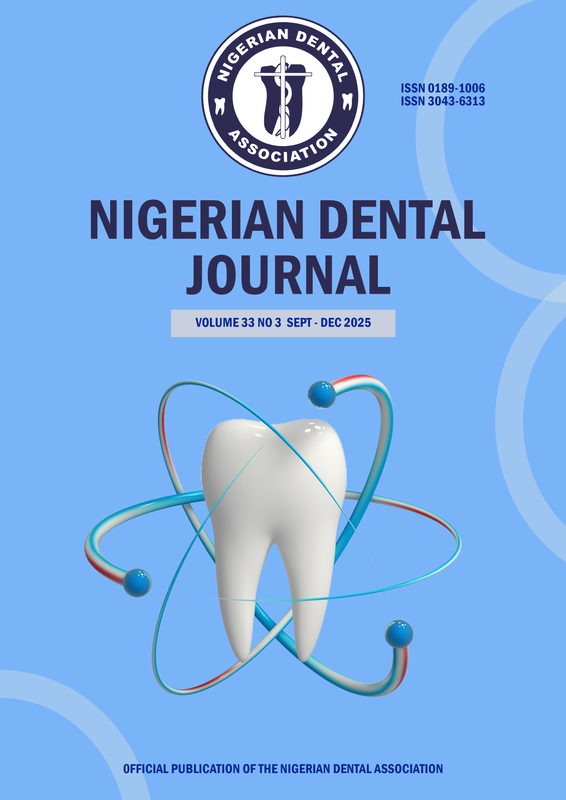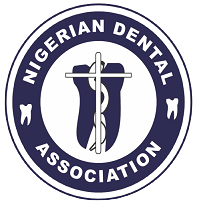Improving Oral Health Service Uptake Among Urban Informal Sector Workers in Nigeria: Trader Perspectives on Affordability, Accessibility, and Delivery Innovations
DOI:
https://doi.org/10.61172/n8nd1e37Keywords:
Teledentistry,, Awareness, Perception, Dental professionalsAbstract
Background:
Urban Informal Sector Workers face unique barriers to preventive healthcare; however, little is known about their oral health behaviors in rapidly growing market economies. This study examined the patterns, determinants, and perceived facilitators of dental service utilization among traders in an urban marketplace.
Methods:
A cross-sectional survey was conducted among traders and businessmen in Lagos State, collecting demographic, occupational, and behavioral data, along with self-reported oral health status, service utilization, and perceived barriers. Associations between occupational demands, symptom frequency, and care-seeking behaviors were analyzed using chi-square test. Open-ended responses were analyzed thematically.
Results:
Among the participants (n= 123), most were aged 30–39 years (45.5%), with a balanced gender distribution and predominant engagement in gadget and equipment sales (61.8%). Although 66.7% rated dental check-ups as important, 83.7% had not visited a dentist in the past year, with the absence of perceived dental problems (54.4%), work-related time constraints (22.3%), and cost (15.5%) cited as the main reasons. The most reported access challenges were the cost of care (34.5%) and long wait times (26.8%). Symptom frequency was significantly associated with dental visits (p=0.021) and treatment delays (p=0.002). Qualitative data revealed three main intervention priorities: financial accessibility (e.g., subsidized/free services, HMO inclusion), targeted outreach and education (e.g., quarterly market-based programs, workplace health promotion), and service innovations aligned with traders’ schedules (e.g., mobile clinics, extended/24-hour services). Mobile dental clinics (33.2%) and extended clinic hours (56.9%) were the most favored solutions, with 70.7% of the participants willing to participate in on-site outreach near their business premises.
Conclusion:
Despite awareness of the value of preventive dental care, utilization remains low among traders due to cost, time constraints, and symptom-driven care-seeking behavior. Interventions should integrate occupationally compatible service models, financial subsidies, and targeted outreach to bridge the knowledge–action gap in this population. Policy efforts addressing both perceptual and structural barriers may substantially improve preventive oral health care uptake in urban informal economies.
Downloads
References
1.Watt RG, Daly B, Allison P, Macpherson LMD, Venturelli R, Listl S, et al. Ending the neglect of global oral health: time for radical action. Lancet. (2019) 394(10194):261–72. 10.1016/S0140-6736(19)31133-X
2.Peres MA, Macpherson LMD, Weyant RJ, Daly B, Venturelli R, Mathur MR, et al. Oral diseases: a global public health challenge. Lancet. (2019) 394(10194):249–60. 10.1016/S0140-6736(19)31146-8
3.Jain N, Dutt U, Radenkov I, Jain S. WHO’s global oral health status report 2022: actions, discussion and implementation. Oral Dis. (2024) 30(2):73–9. 10.1111/odi.14516.
4. Kassebaum NJ, Smith AGC, Bernabe E, Fleming TD, Reynolds AE, Vos T, et al. Global, regional, and national prevalence, incidence, and disability-adjusted life years for oral conditions for 195 countries, 1990-2015: a systematic analysis for the global burden of diseases, injuries, and risk factors. J Dent Res 2017;96(4):380–7.
5. Petersen PE, Bourgeois D, Ogawa H, Estupinan-Day S, Ndiaye C. The global burden of oral diseases and risks to oral health. Bull World Health Organ 2005;83(9):661–9.
6.Sheiham A, Williams DM. Reducing inequalities in oral health in the Africa and Middle East region. Adv Dent Res. (2015) 27(1):4–9. 10.1177/0022034515575540
7.Regional Committee for A. Regional Oral Health Strategy 2016–2025: Addressing Oral Diseases as Part of Noncommunicable Diseases: Report of the Secretariat. Brazzaville: World Health Organization; (2016).
8. WHO. Global oral health status report: towards universal health coverage for oral health by 2030. Regional summary of the African Region. Geneva: World Health Organization, (2023).
9. Erinoso O, Oyapero A, Familoye O, Omosun A, Adeniran A,Kuyinu Y. Predictors of health insurance uptake among residents of Lagos, Nigeria. Population Medicine. 2023;5(July):1–7
10. Adeniyi AA, Oyapero A. Predisposing, enabling and need factors influencing dental service utilization among a sample of adult Nigerians. Population Medicine.
11. Okoye LO, Ekwueme OC. Prevalence of dental caries in a Nigerian rural community: A preliminary local survey. Ann Med Health Sci Res. 2011; 1(2):187–96. PMID: 23209974
12. Uguru N, Uzochukwu B, Uguru C, Onwujekwe O. Determinants and inequalities in the utilization of routine oral health care services in southeast Nigeria. J Med Dent Sci. 2016; 15(4):69–74.
13. Ajayi DM, Arigbede AO. Barriers to oral health care utilization in Ibadan, South West Nigeria. Afr Health Sci. 2012 Dec;12(4):507-13. doi: 10.4314/ahs.v12i4.17.
14. Folorunsho S, Ajayi V, Sanmori M, Suleiman M, Abdullateef R, Abdulganiyu A. Access to and Utilization of Dental Care Services by Older Adults in Nigeria: Barriers and Facilitators. Spec Care Dentist. 2025 May-Jun;45(3):e70040. doi: 10.1111/scd.70040.
15. Adei D, Braimah I, Mensah JV, Acquah Mensah A, Agyemang-Duah W. Improving upon the working environment of informal sector workers in Ghana: The role of planning. Cogent Medicine 2021; 8(1). https://doi.org/10.1080/2331205X.2021.1911441
16. Onasanya AA. Increasing health insurance enrolment in the informal economic sector. J Glob Health. 2020 Jun;10(1):010329. doi: 10.7189/jogh.10.010329.
17. Onyenechere E C, Asikogu LO, Chikwendu, Emetumah, FC, Onyegiri I, Ukanwa, O E. et al Occupational Health and Safety Conditions of Informal Sector Workers in Three Nigerian Cities. Afrika Focus 2022; 35(2): 318-342.
18. Wikipedia. Wikipedia. 2021. Lagos State. Available from: https://en.wikipedia.org/wiki/Lagos_State.
19. Akinyamoju CA, Taiwo JO, Uwadia E, Agbogidi JM, Ambeke A. ORAL HEALTH KNOWLEDGE AND PRACTICE AMONG TRADERS IN IBADAN. Ann Ib Postgrad Med. 2018 Dec;16(2):150-156.
20. Osuh ME, Oke GA, Asuzu MC. Dental services and attitudes towards its regular utilization among civil servants in ibadan, Nigeria. Ann Ib Postgrad Med. 2014 Jun;12(1):7-14
21. Westaway MS, Viljoen E, Rudolph MJ. Utilisation of oral health services, oral health needs and oral health status in a peri-urban informal settlement. SADJ. 1999 Apr;54(4):149-52.
22. Samba M, Guinan JC, Sangare A, Da-Danho V, Bakayoko-Ly R. Itinéraire thérapeutique en Odonto-Stomatologie à Abidjan [Oral health care practices in Abidjan]. Odontostomatol Trop. 2004 Sep;27(107):37-40.
23. Reda SM, Krois J, Reda SF, Thomson WM, Schwendicke F. The impact of demographic, health-related and social factors on dental services utilization: Systematic review and meta-analysis. J Dent. 2018 Aug;75:1-6. doi: 10.1016/j.jdent.2018.04.010. E
24. Alade OT, Arikawe OA, Lawal FB, Taiwo JO. THE COST MINIMIZATION ANALYSIS OF AN OUTREACH DENTAL SERVICE: A PILOT STUDY AT AKINYELE LOCAL GOVERNMENT AREA IN NIGERIA. Ann Ib Postgrad Med. 2016 Jun;14(1):35-40.
Downloads
Published
Issue
Section
License
Copyright (c) 2025 Afolabi Oyapero

This work is licensed under a Creative Commons Attribution 4.0 International License.
Open Access Statement
- We became fully Open Access since January 2023.
- Our new and archived materials are available free of charge on open basis and under a Creative Commons license as stated below.
Copyright statement
Copyright © 1999 The authors. This work, Nigerian Dental Journal by Nigerian Dental Association is licensed under Creative Commons Attribution 4.0 International License.

